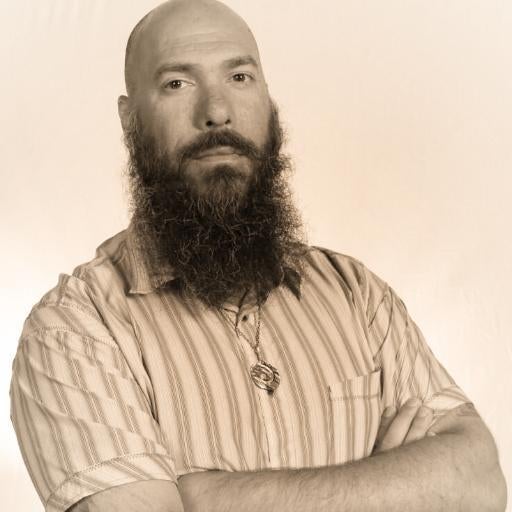 Organizational cultures are like shadows—everybody has one, but nobody knows how to get a solid grip on one.
Organizational cultures are like shadows—everybody has one, but nobody knows how to get a solid grip on one.
On stage at All Things Open this year, Matt Micene, solutions architect and lead engineer for DLT Solutions, will teach audiences how to grasp the seemingly ungraspable.
We chatted with Matt about the functional relationship between values and tools, workplace myth-busting, and building innovative organizational cultures―whatever they are.

Let's start at the beginning: What is culture?
Culture is the lens we experience the world through. It's the description of how a group of people interact with the environment and other people. It's the sum of everything they believe, how they behave, the symbols they use, the myths and stories that they tell. It's art, tools, rituals, habits, language, and more. In short, it's everything!
In organizations, culture layers and changes just like it does for a society. A lot of the "fundamental truths" about how to run a business, how employees should dress, subordinate chains of hierarchical management, and so on, are all more than 50 years old. They carry a lot of weight and tend to be unspoken, more so what managers allow versus what they punish.
If "culture" and "tool" aren't synonyms, then how do they relate to one another?
Tools are products of culture, and at the same time can influence culture.
Tools are specific concrete things that a culture has decided is a way to improve a process. Buckminster Fuller has a great quote about tools and thinking: "If you want to teach people a new way of thinking, don't bother trying to teach them. Instead, give them a tool, the use of which will lead to new ways of thinking." In particular, DevOps tools can provide folks new ways to look at things—like delivering code into a production environment, for example. But there's lots of examples where a new tool doesn't influence the thinking of the people who use it, so things don't change.
Interesting. What might be one example?
From a purely academic, anthropological view, you can look at something as fundamental as the Neolithic Revolution, otherwise known as the development of farming. Since we're talking about a time approximately 12,000 years ago, you can't point to a single tool or factor, but the tools invented to cultivate plants and later raise animals had a massive effect on human culture.
In a more on-topic answer, cloud has had a pretty plain impact on IT thinking. The idea of "cloud native" applications and operations all center on the nature of the tool and its implications. I'd even point to virtualization as a tool that had the opposite effect. Virtualization underpins cloud, but it didn't change the way we built, maintained, or expected servers to behave. We got better cost effectiveness, but not a new way of thinking.
How do you typically respond to folks who claim they want to "change the culture" of their IT shop, their team, or their organization?
Usually, there's something specific that folks want to change that can be narrowed down to a belief consciously or unconsciously held by the organization. Find the root of that itch, figure out the source, and start working on an alternative story—something that has value and conveys the new ways.
You're trying to influence how people think, and that's harder and takes longer than most people think. I'll tell people to start small, especially if this is their first time trying to actively influence people. Try to understand how people connect to the organization and how that might differ from how you connect to it. Look at other organizations who actively manage and influence their cultures, like Facebook or Zappos or ARAMCO. Oh, and read a book!
Any recommendations?
Sure! I'll give you a preview of a slide from my upcoming talk:
- The Phoenix Project
- Effective DevOps
- The Fifth Discipline
- Team of Teams
- The Silo Effect
- Moral Mazes
- Reframing Organizations
I'd like to note that most of these are not IT-focused books, and several aren't new (but have had recent revisions). We need to understand that we aren't pioneers in organizational culture; there's a wide swath of existing material and disciplines out there. Don't get stuck on Deming and Drucker just because you recognize their names!
Reading more sources from more disciplines lets you compare and contrast authoritative voices on the subject. For me, for example, Reframing Organizations is a good read, but there's some traditional hierarchical focus that doesn't match up with my views or those of the other authors.
What's the most difficult task associated with influencing organizational cultures?
Culture changes by consensus, not fiat. You can't just say "we won't believe XYZ anymore" and expect it to happen. There's a whole system of reinforcement built into statements like "that's how we've always done it" beyond just not rocking the boat.
Getting people on board with your new story or mission can be difficult, especially in an older, more established organization. Culture is more of an "emergent property" than a thing you can fix. Culture in organizations tends to be informal, unspecified, and almost unconscious; very few organizations think strongly, if at all, about their culture.
An organizational culture is also a personal experience; not everyone has the same reaction to change. Connecting to a sense of mission and purpose behind the change can be a big challenge.
Yes. We're keen on discussing the importance of purpose and mission when establishing open organizational cultures. But if culture is an emergent property, something on which we can't act directly, on what do you suggest acting to begin the long process of culture change?
Myth-busting and myth-building. A good amount of culture is expressed and experienced in the stories we tell ourselves. The ways that organizations tend to tell their own stories is through effective mission statements. Mission and purpose are effective when they aren't full of buzz wordy inspirational filler, but connected to how people want to see themselves.
Laurenellen McCann, who leads New America DC, captured a key concept when they coined the phrase "Build with, not for."
While this is primarily about technology for social good, they have a great view on cultural impact: "In a top-down world, people take actions, make decisions, and build systems 'for' us—most of the time, with either our explicit or structural consent... We can choose to stop working 'for people' and to do the legwork it takes to actually start working with them."
Connect the stories that people tell and hear to a strong message, and then start working for them. That's how you can influence your organizational culture.
Which are you more likely to do first: revert to siloed modes of working or shave your beard?
Just because I talk a good game doesn't mean I've won! I'm still working in a highly siloed environment actively trying to find new myths to tell internally.






Comments are closed.